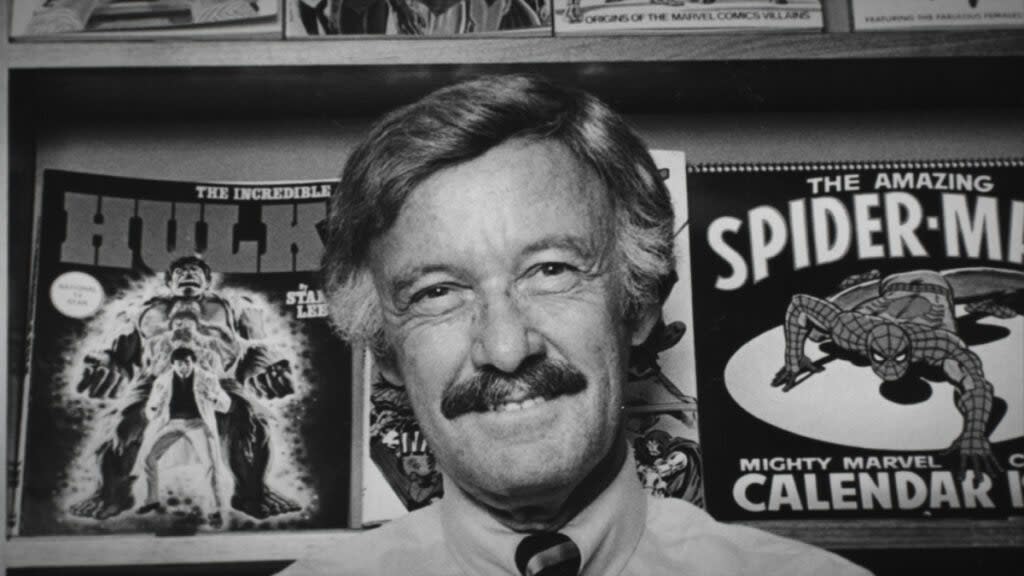‘Stan Lee’ Review: Marvel Pays Tribute to Its Comic Book Legend

- Oops!Something went wrong.Please try again later.
- Oops!Something went wrong.Please try again later.
- Oops!Something went wrong.Please try again later.
“Stan Lee” — a documentary on the man who, along with Jack Kirby and Steve Ditko, created Spider-Man, X-Men, Iron Man, Thor, Black Panther and many other iconic Marvel characters —
selectively focuses on the comic book legend’s career and, to a much lesser extent, his personal life, pruning considerable information about his other ventures and legal disputes as seen on Wikipedia. It’s co-produced by Marvel Studios, so the film, which receives its world premiere at Tribeca Festival and streams on Disney Plus on June 16, expectedly sings his praises.
Lee himself posthumously supplies the first-person voiceover narration, albeit indirectly through various archival interviews and speeches given over the years, which filmmaker David Gelb (“Jiro Dreams of Sushi”) has carefully spliced together based on the chronology of seminal events in his lifetime. To illustrate the narration, Gelb has employed conventional archival footage and photos as well as not-so-conventional comic strips and clay figures. The panels all seem to be culled from old Marvel publications, though it’s not immediately apparent if any original artwork has been commissioned specifically for the documentary. The clay figures are interesting but not really relevant to Marvel per se. It’s also uncertain if Gelb envisioned claymation but ran out of time or
budget.
Also Read:
‘Milli Vanilli’ Review: Doc on Infamous Group Has Plenty of Blame to Go Around
His story begins in 1922 when Stanley Lieber was born in New York City to Eastern European immigrants. He was an avid reader of “The Odyssey,” Sherlock Holmes and others, and aspired to become Errol Flynn when he grew up. His father, Jack, was often unemployed during the Great Depression, which instilled in him early in life the significance of a steady job. He unintendedly got into publishing in 1939 after a suggestion by his uncle. At Timely Comics, the predecessor of Marvel, he initially assisted editor Joe Simon and illustrator Kirby. Soon he got to dabble as a text filler and adopted Stan Lee as his nom de plume. By 1941, after Simon and Kirby left, Lee became the de facto editor.
He volunteered during WWII and was assigned to work on training manuals due to his experience in publishing. Lee returned to comics in 1947, wearing multiple hats as an editor, art director and writer. The company churned out about 100 magazines a month. By 1961, he had grown dissatisfied with the trivial content he was producing. With Kirby’s return to the fold, Lee shifted his priorities to creating relatable characters and stories he would personally enjoy reading, beginning with the Fantastic Four. The example provided in the film shows the superhero quartet evicted from their headquarters because they could not keep up with the rent. Another is Spider-Man’s receiving a check which he was unable to cash because he could not provide identification in spite of his costume. Lee felt these would better prepare young readers for the real world.
Also Read:
Watch the First 4 Minutes From the Harry Belafonte Doc ‘Following Harry’ (Video)
Fans will certainly enjoy these anecdotes about how their favorite superheroes came to exist. In addition to making flawed heroes and sympathetic villains, Lee wanted characters women and minorities could identify with. He also felt stories needed morals without being preachy, and defied the Comics Code to publish a series of Spider-Man books with anti-drug messages.
When Lee no longer had time to properly script the comics, he gave synopses to illustrators and then filled in words in balloons based on what they turned in. The stories drew inspiration from current events, such as the Vietnam War and Ku Klux Klan’s activities. The Marvel office had spontaneous and chaotic energy, with creatives jumping all over the place to act out scenes. Interestingly, this ethos seems to have all but vanished from the movie adaptations Marvel Studios is joylessly pumping out on an assembly line. Once the timeline gets to the 2010s, the documentary suggests that the only highlights in his life were making cameo appearances and lending street cred to Marvel movies.
Even though no one expects a Stan Lee documentary with Marvel’s involvement to be anything less than flattering, at least the film is transparent about his disputes with Kirby and Ditko over the creation of all the beloved characters. The film even includes an argument between Lee and Kirby on a 1987 radio broadcast, more than a decade after their storied collaboration.
Gelb’s documentary gives viewers an overview of who Lee was and what made him tick, but mostly within the context of comics. There are scant soundbites from others about him, the most prominent being from his late wife, Joan. Though the movie may satisfy some obsessive fans and armchair historians, it feels more like a well-put-together tribute to the mastermind behind The Walt Disney Company’s biggest IP.
Also Read:
Tribeca Festival 2023: See the Star-Studded Red Carpet Arrivals (Photos)

